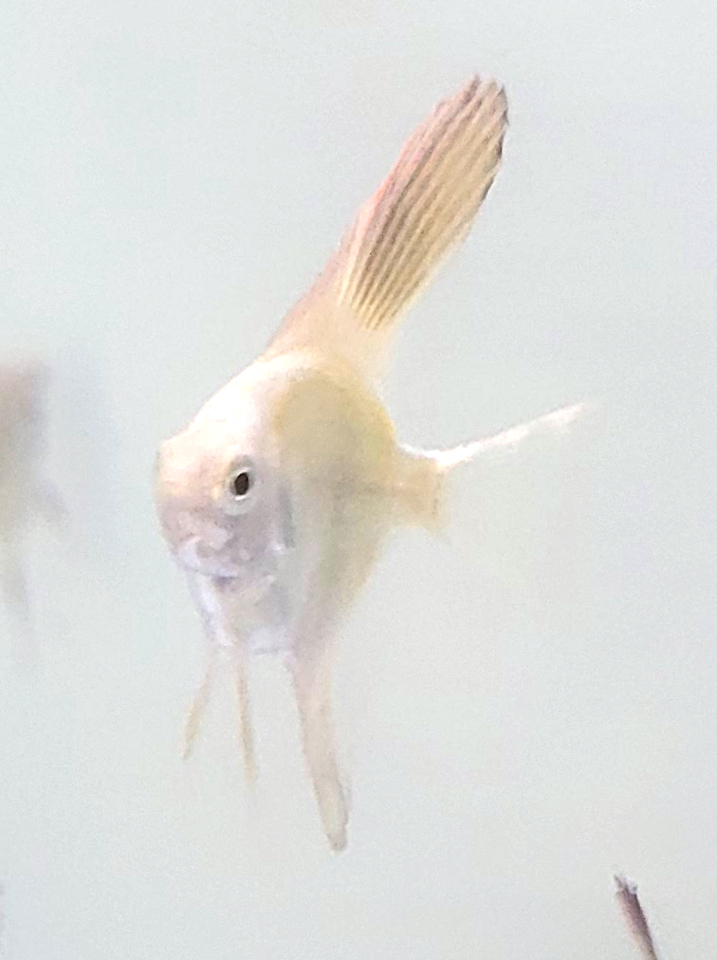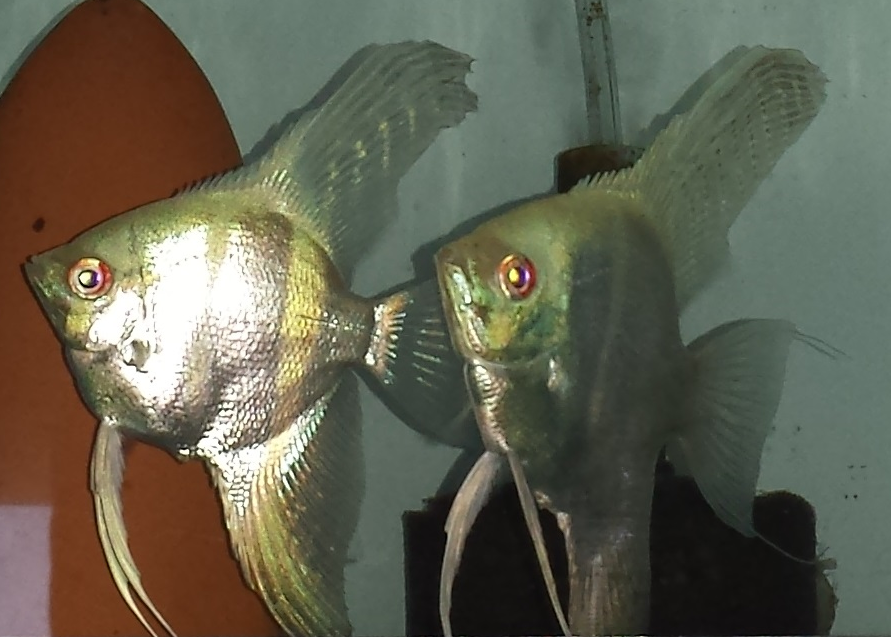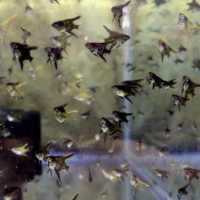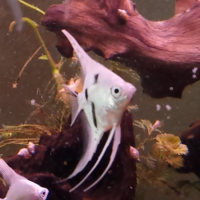Description
Bulgarian Green Lilac Point is sometimes referred to as New Platinum; however, it caused too much confusion with the stark white Platinum phenotype (pb/pb g/g). Lilac Point Angels have a pale green overtone on a white body. Fins typically are very pale gray to off-white.
These angels will develop their colors through adulthood. Photos are examples of different fish in different lighting conditions to show off how much variation in color there can be.
Genetically, Bulgarian Green Lilac Point Angels carry two copies of the Bulgarian Green genes and two copies of the Philippine Blue genes. Genetic notation: pb/pb bg/bg. Offspring will be 100% Lilac Points.
Breeder Group of 5 Bulgarian Lilac Points is perfect for those who don’t want to wait to grow out your own breeders. Sold individually would cost around $400! This offer will get you going much faster. Many have already paired off naturally. You will receive 5 Young Adult or Adult fish of the same quality that we would add to our breeding program. We inspect shape and do our best to make sure you get both males and females. If a pair has naturally formed that will be the first 2 fish we will select for your group.








Reviews
There are no reviews yet